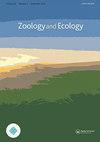Avifauna of M’Zab region (Ghardaïa, Algerian Sahara): checklist and overview of the current status
Q4 Environmental Science
引用次数: 2
Abstract
Despite the lack and irregularity of rainfall, high temperatures, and limited food resources, desert areas, with their oases and wetlands, are considered to be an essential stopover for birds and an important place for their wintering and breeding. In this study, we made a list of all the birds recorded in the M’Zab region at Ghardaïa (Algerian Sahara) from 2015 to 2022 using the point count method. We found 203 species (69 of which were waterbirds), belonging to 23 orders and 48 families. The most abundantly represented were Passeriformes, with 18 families and 91 species (44.83%). 84.24% of the species occurred in wetlands, followed by pre-urban areas (40.39%), palm groves and agricultural crops (39.90%). As for the phenological status of the recorded birds, 51 are breeding species, of which 38 are sedentary, 10 are migratory, and three are occasionally nesting waterbirds. There are 122 non-breeding species, of which 81 are passage visitors and 41 are wintering species. Status of the remaining 30 species is uncertain.M 'Zab地区的鸟类(Ghardaïa,阿尔及利亚撒哈拉):清单和现状概述
尽管缺乏降雨和不规律,气温高,食物资源有限,沙漠地区及其绿洲和湿地被认为是鸟类必不可少的中途停留地,也是它们越冬和繁殖的重要场所。在这项研究中,我们使用点计数法对2015年至2022年在Ghardaïa(阿尔及利亚撒哈拉沙漠)M 'Zab地区记录的所有鸟类进行了列表。共发现鸟类203种,其中水鸟69种,隶属于23目48科。雀形目以18科91种(44.83%)最为丰富。湿地占84.24%,其次是城市前区(40.39%)、棕榈林和农作物区(39.90%)。在鸟类物候状况方面,51种为繁殖期鸟类,其中定居型38种,迁徙型10种,偶筑巢型3种。非繁殖期有122种,其中81种为候鸟,41种为越冬种。其余30个物种的状况尚不确定。
本文章由计算机程序翻译,如有差异,请以英文原文为准。
求助全文
约1分钟内获得全文
求助全文
来源期刊

Zoology and Ecology
Agricultural and Biological Sciences-Animal Science and Zoology
CiteScore
1.00
自引率
0.00%
发文量
1
 求助内容:
求助内容: 应助结果提醒方式:
应助结果提醒方式:


